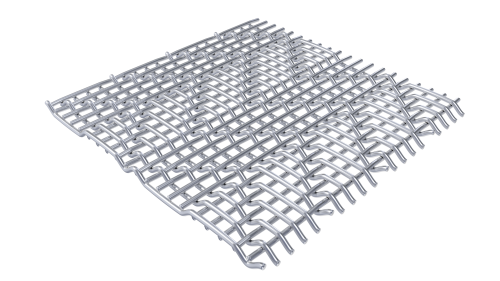
Meeting stringent Euro 6 emission limits for passenger vehicles from 2014 calls for highly efficient systems and is a challenge for filter media manufacturers. As low pressure exhaust gas recirculation at high engine loads plays a key role in the endeavour to meet future emission limits.
Diesel engines are the future. Their economy, efficiency and sturdiness meet the high expectations for tomorrow's vehicles. But zippier mobility has to fulfil increasingly stringent standards for environmental compatibility. Consequently, the automotive industry is striving to keep pace with the constantly growing demands on diesel engines through further developments and innovative systems.
This is where technical weaver GKD – GEBR. KUFFERATH AG, comes into the picture. In close cooperation with vehicle manufacturers and their suppliers, this specialist for technical meshes is developing high-performance filter media that are proving their efficiency, even in the latest large series productions. GKD's woven metal mesh constructions perform critical functions in systems for low pressure exhaust gas recirculation (LP EGR).
Without compromising their level of performance, diesel engines have to reconcile maximum reductions of fuel consumption, CO2 and pollutant emissions with rigid market and model specifications for size, weight and price. Meeting the more stringent Euro 6 emission limits for passenger vehicles that will apply from 2014 calls for highly efficient systems comprising exhaust gas recirculation technology, diesel particulate oxidation catalyst (POC), selective catalytic reduction (SCR) and diesel particulate filter (DPF). In addition to reduction of nitrogen oxides (NOx) through exhaust gas recirculation, particle mass and count will also have to be significantly further reduced.
Low pressure exhaust gas recirculation at high engine loads plays a key role in the endeavour to meet future NOx emission limits. In LP EGR, exhaust gas is extracted downstream of the diesel particulate filter, led through the EGR cooler and recirculated to the diesel engine upstream of the turbocharger. Optimal flow configuration minimises pressure drop and ensures that the turbocharger maintains full performance capacity with improved fuel and CO2 efficiency.
Apart from low flow resistance, lasting protection of engine, compressor and turbocharger against damage from particles on the clean air side of the particle filter is absolutely crucial. All particles > 300 µm – for example tiny fragments from the upstream diesel particulate filter – must be reliably retained by an emergency filter in the LP EGR system. Further key requirements of LP EGR filters are temperature resistance in the range of 300 – 850°C, low pressure loss of just 2 – 20 mbar and a specific level of component cleanliness with regard to hard particles. To ensure the efficiency of the whole system, it is essential from the very start to tune the choice and design of the filter media to the specific requirements and the available space.
Reliable protection
Various designs of these LP EGR filters by GKD have established themselves on the market. A radial filter, for example, is used for installation in the main exhaust stream behind the diesel particulate filter. It filters the exhaust gas extracted from the DPF through a lateral outlet and feeds it to the cooler. In contrast, with a cone filter located in the EGR line, the exhaust gas recirculated from the DPF flows through the filter in a longitudinal direction. This type of filter can be installed directly after the DPF or immediately before the compressor.
As filter media, industrial woven wire meshes have advantages over other solutions, and set standards in terms of low pressure drop and precision filtration. Furthermore, woven metal meshes offer long-lasting resistance to demanding operational conditions and combine maintenance of tight filtration tolerances with reduction of flow turbulence in the EGR system.
Depending on the specific requirements of the particular customer for an LP EGR filter, GKD selects single or multi-layered volumetric mesh for the job. Multi-layered meshes offer the same stability and durability as single-layered meshes, but have even higher filtration efficiency and smaller pore sizes with lower pressure drop. GKD also supplies the components fitted with customised seals ready for installation.
A new dimension in LP EGR
In the latest generation of LP EGR systems, GKD's innovative 3D Volumetric Mesh is proving successful. Its considerably higher volume porosity of up to 90% facilitates effective filtration. The pore distribution of this particular mesh type ensures retention not only of harmful particles from the DPF but also of the smaller particles that can occur due to a defective particle filter or a ‘soot slip’. An effect that can also be used for further diagnostics. GKD determines the individual mesh construction and the specific design parameters using CDF simulation.
Developers of tomorrow's petrol engines with low pressure exhaust gas recirculation have also recognised the potential of single-layered or multi-layered Volumetric Mesh, and are increasingly taking these findings into account in their own deliberations.



